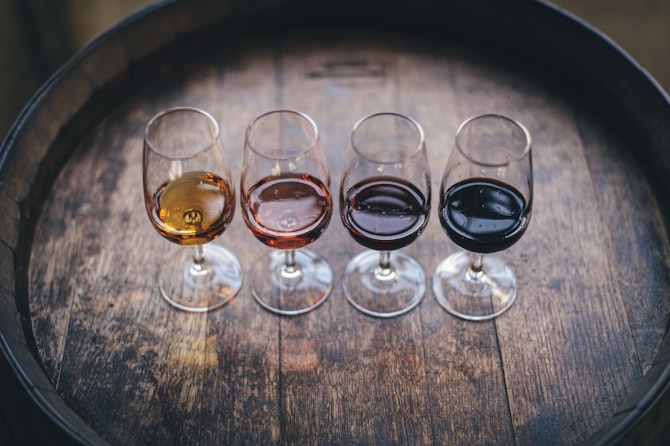Den Österrikiska druvskörden 2010 har nu summerats, so far, och en information har skickats ut av organisationen Austrian Winemarketing Board. Läs deras rapport som följer..
The Austrian Vintage 2010: A Happy Ending with Small Quantities
The 2010 vintage was defined by unusually difficult weather conditions, with low grape yields the result. Nevertheless, crisp white wines and fine, lean red wines are expected.
The harsh Winter of 2009 was met by the pleasant arrival of Spring in 2010. However, cold, wet periods soon followed, and 2010 saw significant rainfall and a lack of sunshine overall. Depending on the grape variety and wine-growing area, the flowering period occurred during weather conditions that were sometimes - and sometimes not – favourable, and had a direct effect on the yields. The occurrence of couloure at this point was a key factor in the vines bearing fewer bunches as well as each bunch yielding a smaller amount of grapes. This led ultimately to the lowest grape harvest in 25 years.
With only 1.7 million hectoliters, the total harvest quantity in 2010 did not even meet the annual domestic consumption average - approximately 2.5 million hectoliters. Although not every grape variety suffered yield loss, Austria's leading white variety, Grüner Veltliner, was considerably affected. Also other varieties such as Chardonnay, Traminer and St. Laurent yielded lower quantities. But again, the different wine-growing areas must be considered: in Steiermark (Styria), for example, harvest totals were down by only around 12%, while other areas had 40% losses because of bad weather conditions.
No Disadvantages Without Advantages
After the rather unsteady flowering period, there was a deceptive stretch of heat in July. But this was all too quickly replaced by a cool, rainy August and a September that showed few signs of Indian Summer. In October, there were several “windows” of dryness that allowed, at carefully chosen harvest times, grapes to be brought into the cellars dry, healthy and ripe. Especially treasured were the undamaged grapes set loosely on their bunches: this deterred the development of Botrytis, and the growers could breathe easier until harvest time. Also, cool temperatures - especially during the nights – made an essential contribution to the rare “wet year but healthy grapes” phenomenon.
Winemakers with strong nerves were rewarded for their patience because extract, content and fruit nuances increased week by week into the later harvest period. And good results have been achieved. With more than enough sugar-free extract, the white wines are presenting themselves as fruit-accented and with acidity that is racy, but not aggressive. Varietal character and expression are clear and Botrytis, if any, remains – with a few exceptions - in the background. Overall, this kind of white wine vintage is defined by fresh, sleek-style wines – in other words, again a genuine “Austrian” vintage! Thanks to the right amount of patience as well as the acceptance of lower grape quantities, full-bodied wines with 13% or more alcohol, plenty of depth and dense structure were achieved, but in volumes lower than in previous years, of course.
Crispy Whites, Lean Reds
White wines, such as those made from the showcase variety, Grüner Veltliner, combine an appealing and animated fruit-acidity play with distinctive varietal character. Nature delivered a bit of a reserved expression to the Rieslings, although they have plenty of raciness and some good crystal-clear fruit flavours - and even could age better than other vintages like 2004 and 2008. The Burgundy varieties, including Weissburgunder and Chardonnay, are – even with their own quantity losses – showing wines that are round, balanced and exude attractive varietal attributes.
The same can be said for the pointed - but not grassy! - Sauvignon Blancs and the Muskatellers, which turned out nicely in the Steiermark. There, they benefited from the more favourable weather conditions. In the Steiermark's three wine-growing areas, higher sugar-ripeness was reached fortunately at an early stage: fortunate, because wet conditions combined with high temperatures spawned a sudden fungus outbreak that could be managed only through a speedy harvest. Also the white wines of Burgenland reflect the characteristics of the vintage and, with their somewhat heftier acidity structure, are even more refreshing on the palate.
About the quality and quantity of the sweet wine harvest, it is still too early to tell. But the icy temperatures in early December certainly were optimal for ice wines.
The red wine sector was a bit more complicated but, finally, Zweigelt brought the best results because of good sugar ripeness and a fruit-accented (red berry) character. Also Pinot Noir and St. Laurent, which had significant quantity losses, performed well in their stronghold territories. Conditions for the late-ripening varieties were even more difficult – such as with Blaufränkisch, for which a very tedious, strict selection was necessary in order to reach appropriate gradations, and the French varieties Cabernet Sauvignon, Syrah and even Merlot, which had better success in some areas.
Whether or not our red wine specialists will produce from 2010 wines in all of the known categories or focus on some of their most important brand- and single vineyard-wines, ultimately depends on their own particular “philosophy” and will become clear in the future. But for the time being, the great red wines from 2009 are still maturing in the barrels - and keeping expectations very high!
För mer information, klicka här.












